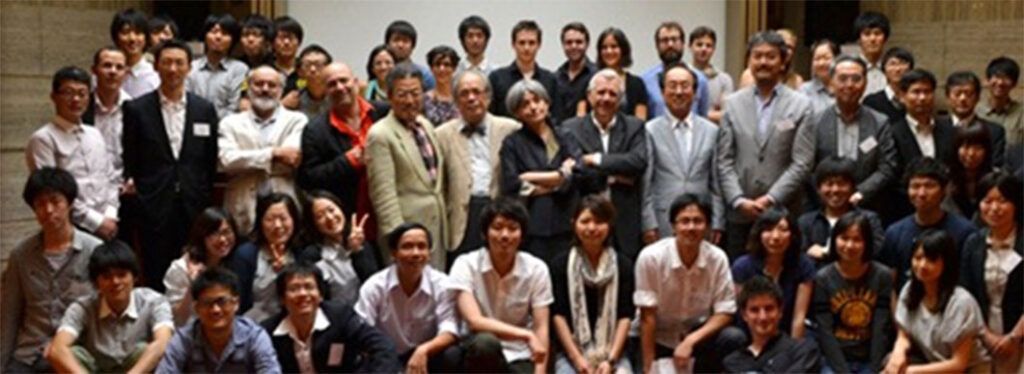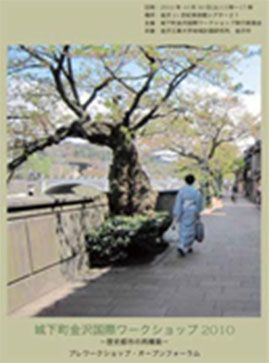Kanazawa is a city of 450,000 with a rather stable demographic situation. It has a solid social base, its economy is diversified – medium and small manu- facturing, electronics, food processing industries, high quality handicrafts, tourism and cultural activities.
The natural environment is attractive. The city is close to hills and mountains, is crossed by the rivers Sai and Asano. It is dominated by the Castle hill and the Castle park, the sea is close. There are historic gardens and other important parks. The temperate and wet climate is good for vegetation. Kanaza- wa has a very sound cultuThe history of Kanazawa since the 17th century shows a continuous determined care for a balanced development, based on culture, imagination and quality of the environment. Nowadays the city has the objective to develop an economy based on advanced industrial products and services, cultural activities, cultural tourism.
The laboratory dealt with a number of issues that are important for developing a strategy able to match the conservation of Kanazawa’s heritage with the need for change ad innovation.
The guidelines were as follows;
- The amount of population and the physical size of the city will be kept within manageable dimensions. This will allow to keep in the future existing social relationships and lifestyles, present economic structure, functions and activities. At the same time the existing solid social and economic fa- bric will adjust in order to support and facilitate the development of innovative processes and new conditions.
- The quality of urban life and high envi- ronmental standards will be considered strategic resources in the development process, and creativity will become a crucial component of it. This means that advanced research and high-tech industries, visual and performing arts, top quality crafts, cultural tourism and its induced activities will become the economic base of the city.
- A strong interconnection among the historic districts of the city (the Castle, the market) and the newer and very re- cent new developments. The model of the Castle City that developed openly around a very important (and symbo- lic) core (the center of power) can be adapted to nowadays urban needs and conditions.
- The strong social fabric that still exists in some parts of the city will be preserved through a number of specific actions. The target is to keep alive forms of life that still perpetuate tra- ditional values and can teach us positive models of interpersonal rela- tionship to be used and reproduced in contem- porary urban contexts.
- An integrated set of diversified policies.
- New jobs that are con- sistent with this strategy must be created. They can also be related to tourism, but the dependence of historic districts from tourism must be limited.

